Students explore the founding era legacies of assembly and petition and how those legacies informed the creation of these often-overlooked aspects of the First Amendment. They will complete a close reading activity to compare and contrast ideas presented in the Interactive Constitution and describe the ways these rights have been interpreted by the Court and used by citizens at various points throughout U.S. history. They will evaluate the constitutionality of assembly and petition rights in the modern era through an in-class, civil dialogue addressing questions about time, place, and manner restrictions; counter-protests; protests on college campuses; and other relevant assembly and petition questions.
You Can’t Say That: In My Opinion
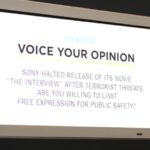
Apply what you learned about constitutional exceptions to the First Amendment by studying a modern situations. Be sure to summarize the facts of the situation and then present your opinion about whether the actions of the individual in the scenario were protected by the First Amendment. If you disagree with the court, school or law enforcement’s decision, be sure to explain why you disagree.
The Press and the Civil Rights Movement Video Lesson

Civil rights leaders effectively used the First Amendment and the press to expose the injustices of racial segregation. Reporters who covered the civil rights struggle give up close and personal accounts. Learn more about the First Amendment’s power to bring about profound social change and the role and challenges a free press embraces when tackling controversial issues.
Free Speech Essentials
Do your students know what they’re free to say online? At school? On a public street corner? From censorship to cyberbullying, the First Amendment and the freedoms it protects are as hotly contested as ever. This EDCollection explores 16 free speech debates ranging from the founding of our nation to recent headlines to illustrate what free speech actually means, where it comes from, and how far it can go. Whether you’re a social studies teacher looking for a complete unit or an English teacher looking to spend a single class period on free expression, there’s something for everyone. Free registration required.
Women, Their Rights and Nothing Less: The First Amendment and the Women’s Suffrage Movement
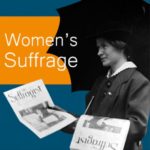
Use this map to explore how the women’s suffrage movement — and the people who opposed it — tried to influence public opinion. Explore artifacts from billboards and cards to buttons and cartoons. You’ll uncover the wide array of tools and tactics each side used to spread its message, and you’ll see how geography and other factors shaped the form and content of their communication.
Introducing the First Amendment
Students will inductively discover the First Amendment by reading and analyzing newspapers. They will discuss various circumstances involving the First Amendment, and so understand that in certain instances – libel, publication of national secrets, etc. – there is a limit to the freedoms expressed in the First Amendment.
First Amendment Overview
Congress shall make no law respecting an establishment of religion, or prohibiting the free exercise thereof; or abridging the freedom of speech, or of the press; or the right of the people peaceably to assemble, and to petition the Government for a redress of grievances.
Making a Change: The First Amendment and the Civil Rights Movement
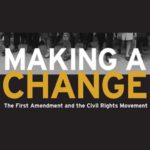
Delve into hundreds of historical newspapers, videos, photographs and more to find out how the five freedoms empowered people fighting for change — and those fighting against it. Topics include: the history of the American civil rights movement, the relationship between the movement and the news media, the evolution and application of First Amendment freedoms, bias in the news, civic engagement and more.
Putting the Bill of Rights to the Test
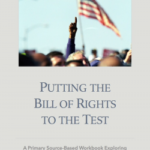
This primary source-based workbook (as PDF or eBook/ePub) helps students explore some of the protections found in the Bill of Rights and how they’ve been tested throughout U.S. history. Each chapter includes background information, guiding questions, analysis questions, primary sources, and discussion questions. Concepts include freedom of religion, speech and press; the right to assemble, petition, bear arms, and have counsel; search and seizure; due process; and cruel and unusual punishment.
Women as Citizens Under the Constitution
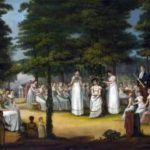
This short video traces the evolution of constitutional theory about women’s citizenship. The original Constitution is gender-neutral and women shared many rights enjoyed by men: right to petition, freedom of religion, trial by jury, etc. However, as Dr. Rosemarie Zagarri points out, women’s rights evolved slowly over time in a checkerboard fashion, culminating in the passage of the 19th Amendment in 1919.